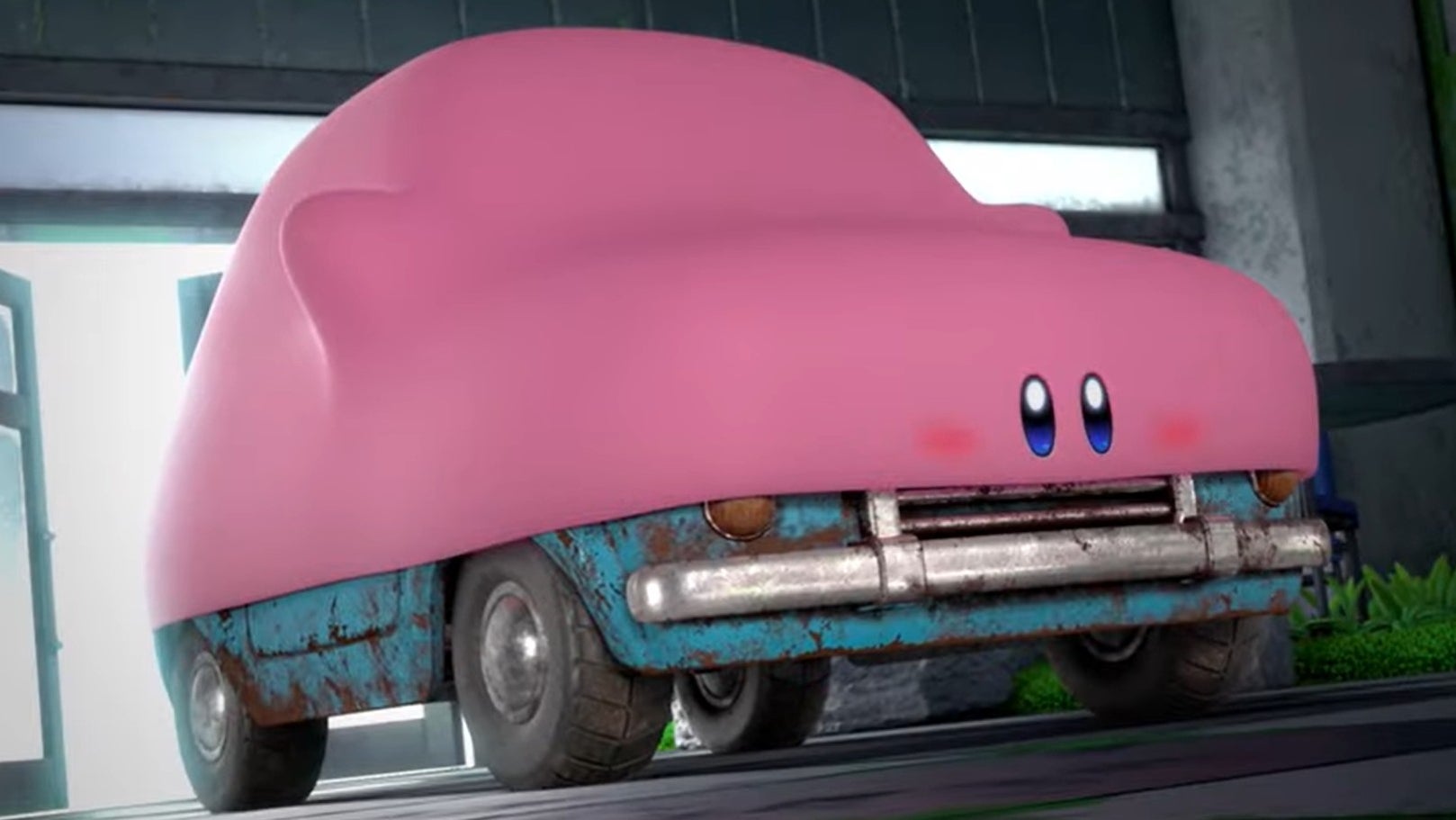However, until now, the developers struggled with transitioning the character from pixels into three dimensions due to his round shape. In a developer blog with members of the team, director Tatsuya Kamiyama explains the challenges faced with this new game. “The first challenge - and we knew this from the start - was that Kirby’s character design was not a perfect fit for full 3D gameplay,” he said. “Kirby’s silhouette is perfectly round. When you’re controlling him from behind, it can be hard to tell which direction he’s facing at a glance.” Perhaps that’s one of the reasons Mouthful Mode was implemented - after all, Carby has an easily recognisable shape. As level designer Yuki Endo says: “From the perspective of creating new gameplay experiences, Mouthful Mode had a kind of intuitive visual appeal for our players.” Associate producer Kei Ninomiya adds: “It was also appealing to us in terms of visual design. Because it would be in 3D, we imagined seeing Kirby in these bizarre shapes from all kinds of angles.” The developers made a number of adjustments to ease players into 3D gameplay. One of these is ensuring that attacks hit enemies, even if the aim is slightly off. Says Kamiyama: “The game accounts for the player’s perspective by tracking the positions of Kirby and the camera. It then maps out a range in which attacks may appear to land. If an attack is within that range, the attack will hit. By doing so, even people who are not so good at 3D action games can attack enemies without any stress.” The team also implemented a “fuzzy landing” where if the player presses jump too soon before landing, Kirby will jump again rather than hover when close to the ground. Endo explains how camera control is often a barrier for players in 3D games, so in Kirby and the Forgotten Land the camera is automated and levels were designed accordingly. “In this title, the camera moves automatically. It always shifts to the optimal view for the actions you need to take, whether you’re looking down at Kirby from above or seeing him from a specific side angle. This makes it easier for the player to move forward even when there are obstacles,” he says. “To make the game easy to enjoy, we also talked with our designers and worked on the decorations on the maps. To make sure players could easily tell the differences in height among buildings and obstacles, we marked some surfaces with fluorescent tape that matched the world’s aesthetic.” All of this is to ensure this new Kirby game is accessible for all players, something that’s integral to the series. “The concepts of games being enjoyable for anyone, as well as being highly accessible yet still offering a lot of depth, are aspects that we have treasured in the Kirby series,” says series general director Shinya Kumazaki. “When I began planning this game’s difficulty level, I pictured a 3D platformer easy enough that even a three-year-old child could play.” The team needed to balance a sense of adventure without overwhelming the player with enemies. “Everyone on our development staff really loves Kirby, so no one wanted to torment him with an unfair situation,” says Kumazaki. You can read the full blog on the Nintendo website. Kirby and the Forgotten Land is released on Nintendo Switch on 25th March. Martin recommended the game in our Kirby and the Forgotten Land review: “This is an absolute hug of a game, and quite likely Kirby’s best outing yet.”
